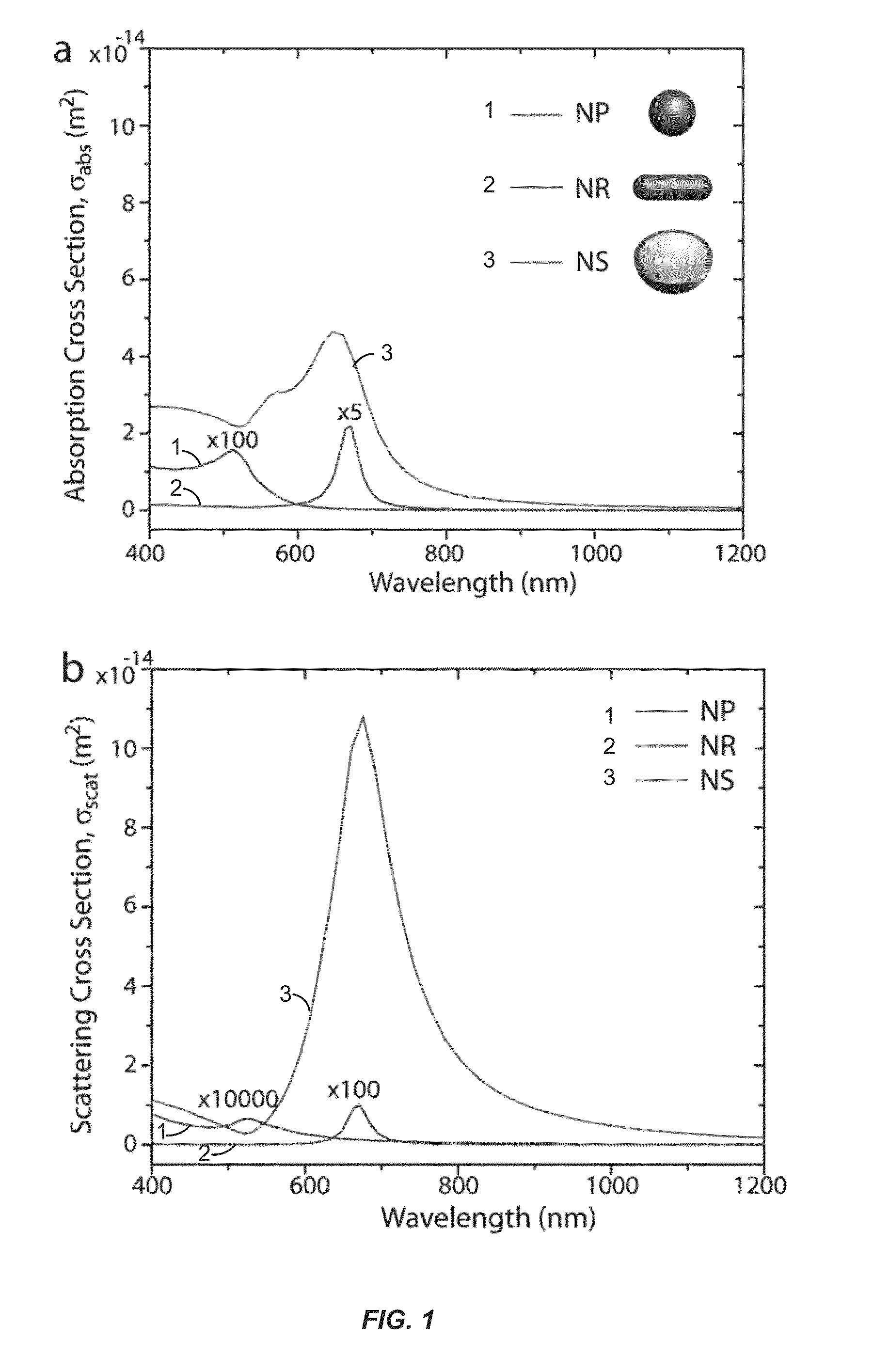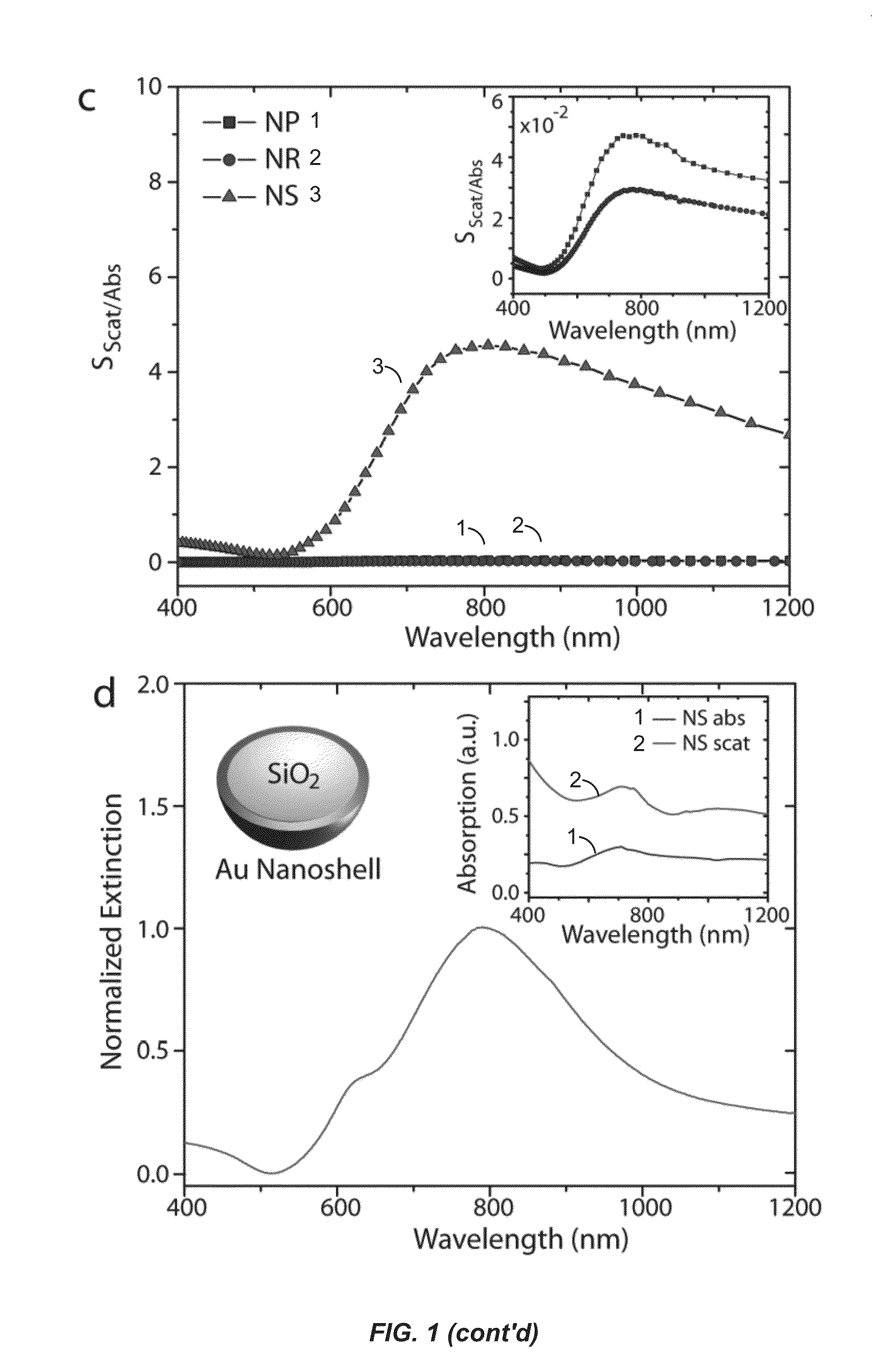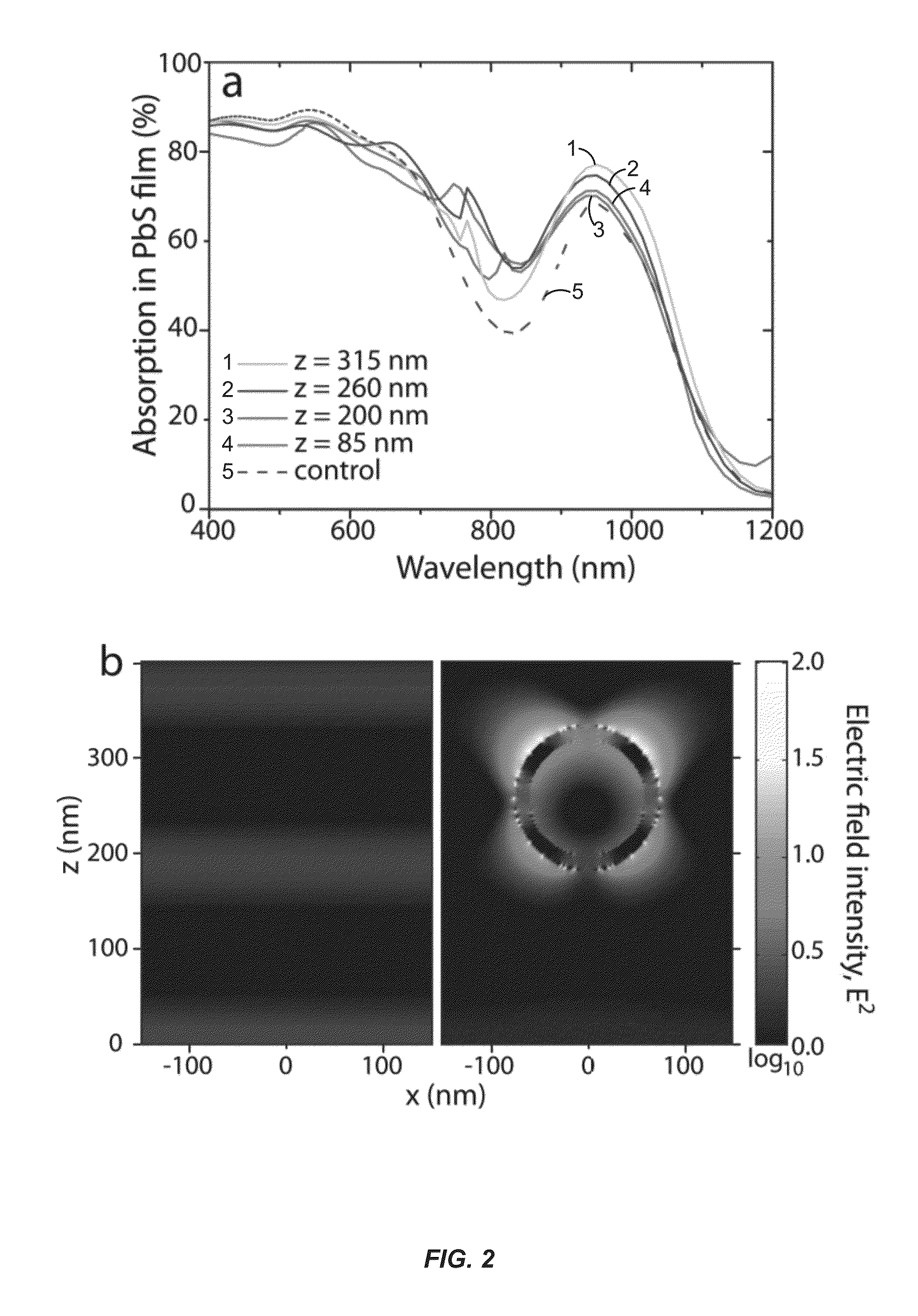Photovoltaic devices with plasmonic nanoparticles
- Summary
- Abstract
- Description
- Claims
- Application Information
AI Technical Summary
Benefits of technology
Problems solved by technology
Method used
Image
Examples
example 1
Photovoltaic Device
[0166]This example illustrates the preparation and characterization of a light absorbing semiconductor nanoparticle photovoltaic device that incorporates plasmonic nanoparticles.
[0167]In this example, gold plasmonic nanoparticles were incorporated into colloidal quantum dot (CQD) films embedded in photovoltaic devices.
[0168]The devices were analyzed with full-wave finite-difference time-domain (FDTD) simulations to evaluate the potential impact of incorporating different types of metal nanoparticles into excitonically-tuned solar cells.
[0169]This example is suitable for candidate particles that are (1) compatibility with solution processing; (2) have a size range of less than ˜150 nm for integration in films with thicknesses of less than ˜400 nm; (3) have localized surface plasmon resonances (LSPRs) tunable to the near-IR (NIR) portion of the solar spectrum; or (4) scattering-to-absorption ratios (S) of greater than 1. In some instances, the candidate particles ha...
example 2
Nanoshells
[0174]This example analyzes spherical dielectric-metal core-shell nanoparticles, a.k.a. nanoshells. FIG. 1d shows the measured extinction spectrum of nanoshells in methanol solution with a LSPR centered at 800 nm with a full-width at half-maximum of 280 nm. The extinction (absorption+near- and far-field scattering) cross-section is 3-5 orders of magnitude larger than that of either spherical nanoparticles or nanorods (FIG. 1a,b). Due to the presence of a thin metallic shell (˜15 nm), the optical interaction volume of these particles is therefore much larger. This in turn reduces the areal density required to scatter incident light completely while minimizing absorption. The theoretical S factor reaches its maximum at 4.5, and is larger than 3 over a wide spectral range in the near-infrared region (FIG. 1c). Additional calculations for large nanorods (66 nm in diameter and 512 nm in length), spherical nanoparticles (150 nm in diameter), and spherical dielectric particles (1...
example 3
Nanoshell Scattering Factor
[0177]This Example verifies S>1 for nanoshells by experimentally measuring the relative scattering and absorption contributions. A thin layer of nanoshells was deposited by drop-casting from the solution-phase onto a glass slide and separated the absorption and scattering components using integrating sphere spectrophotometry (see Methods below). FIG. 1d inset shows that, in the solid state, S is at least 2 over all wavelengths of interest (e.g., 400-1200 nm). In contrast, the S of nanorods deposited by a similar method was measured to be much less than 1 over the same wavelength range (FIG. 5).
[0178]FIG. 5 shows the UV-Vis-NIR absorption and scattering spectra taken in an integrating sphere for a drop-cast ensemble of (a) nanorods and (b) nanoshells on an ITO-coated glass substrate.
[0179]In FIG. 5, absorption (1) was measured by tilting the sample at a slight angle relative to the illumination beam with all other ports closed so that all directly transmitt...
PUM
 Login to View More
Login to View More Abstract
Description
Claims
Application Information
 Login to View More
Login to View More - R&D
- Intellectual Property
- Life Sciences
- Materials
- Tech Scout
- Unparalleled Data Quality
- Higher Quality Content
- 60% Fewer Hallucinations
Browse by: Latest US Patents, China's latest patents, Technical Efficacy Thesaurus, Application Domain, Technology Topic, Popular Technical Reports.
© 2025 PatSnap. All rights reserved.Legal|Privacy policy|Modern Slavery Act Transparency Statement|Sitemap|About US| Contact US: help@patsnap.com



